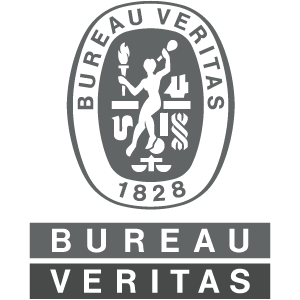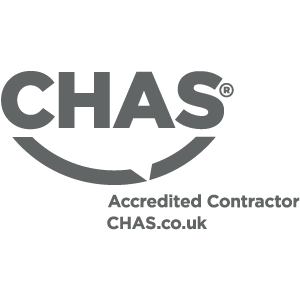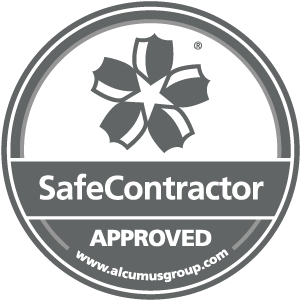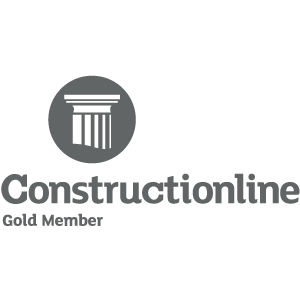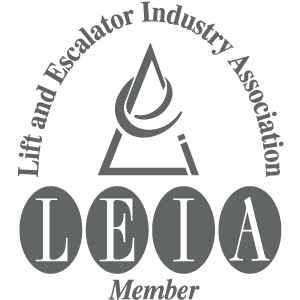When talking about Lifts it’s sometimes necessary to use technical terms and acronyms, so we’ve created a handy glossary to help you make sense of them, whether this be Lift servicing, Lift Repairs, Lift Installations or Lift Refurbishment, Click on a word or phrase to see the definition.
GLOSSARY
A roping arrangement where car and rope speed are the same.
A roping arrangement where the car speed is half of the rope speed.
An electrical supply providing 3 phases of alternating current.
A technique for limiting access. In terms of lift technology, landing operating pushes or car operating pushes can be replaced with key switches or card access, to limit movement to all or certain floors.
This is a lift feature that allows the lift doors to begin opening before the lift car has reached the floor and stopped moving.
An alarm system, triggered by pushing the alarm button in the lift car.
The call system within the car which dials out to a manned operator, normally the service providers’ call centre. This is connected to the alarm button and is used for emergency communication.
Refers to the automation of the opening and closing movement of the lift doors on arrival at a landing level.
An electrical system that is used to rescue passengers in a power failure event, the lift will move to the nearest or designated floor to allow passenger escape
Often referred to as the counterweight, this is a component that balances the weight of the car and ensures traction is provided between the ropes and traction sheave. This is normally 40-50% of the rated load.
A handrail system on the car top, to remove or limit a fall risk.
A frame normally made from steel on which a traction machine is situated.
Governs the design and installation of Evacuation Lifts, providing information for fire safety management, provision of escape, structural protection and access/egress facilities.
Buffers are located in the lift pit to provide protection against the lift continuing to travel past the lowest entrance level.
This is a control system that building users and owners can utilise to monitor electrical and mechanical processes, services and equipment in a building.
The +/- dimensional tolerance allowed and provided for lift installation building dimensions.
A folding door solution as opposed to a conventional telescopic system, often used for space optimisation.
An enclosed platform lift governed by the Machinery Directive. These lifts often have the appearance of a conventional lift.
The lift is controlled from the landing and can be either called to move the lift to the registered call or the lift can be sent from a landing to another level. This is normally on Goods Only lifts with no internal controls.
Device for registering a travel request from the landing or lift car.
The lift car hangs on an L bracket attached to a single shaft wall. Generally used for adjacent entry lift cars or tighter lift shafts.
The Kilogram (KG) rating of the carrying capacity. Often also shown as number of people.
The entrance door situated on the lift car entrance.
The in-car control interface. This is a panel mounted in the car interior with control buttons, including floor register push buttons, alarm and other operating buttons, key switches and visual indicators, depending on the installation.
The elevator frame
A control panel on top of the lift car for those who need to access the lift shaft. The Inspection Box includes a switch to remove the lift from normal operation, move the lift in a controlled way or to isolate the equipment.
A traction movement where a motor pulls a lifting platform via a chain as opposed to traditional ropes. Normally this is applied to Machinery Directive equipment.
A rope to compensate the weight of the main suspension ropes over higher travel, where the weight of the main ropes increases on the car or counterweight side.
The controls inside the lift car need constant pressure during travel.
The electrical panel which controls lift functions, monitors performance and provides an interface for elevator maintenance.
Often referred to as the balance weight, this is a component which balances the weight of the car and ensures traction is provided between the ropes and traction sheave. This is normally 40-50% of the rated load.
A method of group lift control. The system collates information from registered calls and allocates lifts to specific users, vastly reducing travel and waiting times in busy buildings.
Equipment that bridges the gap between a vehicle and the loading bay.
A door feature that will cause the doors to close at a reduced speed should the doors remain open for an extended period of time, normally due to a blockage.
The mechanism for automatically opening the lift car doors.
LED or LCD monochrome display for simple text graphic to communicate lift operation on the landings or car operating panel
The lift car only stops in the up direction in response to car calls during travel, landing calls are collected in the down direction. Used where interflow travel is not expected such as in low rise residential buildings.
The lift car only stops in the up direction in response to car calls during travel, landing calls are collected in the down direction. Used where interflow travel is not expected such as in low rise residential buildings.
A drop bar can be used in Goods Only lifts to form an entrance barrier to stop trolleys or other mobile objects from striking the shaft walls during movement.
Small lifting equipment generally used to transport small goods such as documents, food, small boxes etc.
The control system governs two lifts. Calls are registered and allocated in conjunction with the other lift in the group.
This refers to the fire rating, specifically of the lift car doors. E120 ensures that the doors are resistant to fire pressure for up to 120 minutes.
Battery powered, single phase passenger lift range, available exclusively at Morris Vermaport.
An elevator device that prevents the door from being opened unless the car is present and completes an electrical circuit.
Light provision in case of power failure.
A set of regulations which govern lift works and operation.
Safety regulations for the construction and installation of passenger and goods carrying lifts.
This provides alternative technical regulations given to those by EN81-20 to overcome problems encountered while installing lifts into existing buildings.
Regulations outlining the requirements for the alarm systems to be used on passenger carrying lifts.
Safety regulations and requirements for construction, manufacturing, installation, maintenance, and dismantling of platform lifts.
Regulations and rules for the design, calculations, examinations and testing of lift components.
The additional requirements for accessible passenger lifts.
Additional requirements for vandal resistant lifts. This provides standards against 71.1 and 71.2, these are lesser and greater acts of vandalism and misuse respectively and require levels of resistance over standard regulations.
Regulations for lift installations to be used by fire fighters.
Provides regulation and rules for the operation and behaviour of lifts in the event of fire.
An adapted lift to be designed to behave and operate in an evacuation scenario while adhering to BS 9999 regulations.
A term used to describe a currently installed elevator. This is often used when describing the replacement of an elevator into an existing shaft.
Panels located in the shaft between floor levels and between the sills.
An adapted lift to be designed to behave and operate in line with EN81-72 in a fire emergency situation.
Landing and car calls are collected in the direction of travel, allowing interflow travel.
Sheave is directly connected to the motor.
Equipment governed by the Machinery Directive for goods and a trained attendant.
Equipment designed for the movement of goods only and not for human or animal use. There are no in-car controls and this equipment is normally governed by the Machinery Directive.
A conventional lift adapted to suit the movement of goods as well as passengers, normally operating under EN81 regulations.
The control system governs multiple lifts. Calls are registered and allocated in conjunction with the other lifts in the group.
Global System for Mobile Communications. This is a bolt on module to allow the autodialler to dial out over a mobile network. Normally installed in lieu of a hard-wired telephone line.
Steel rails that act as runners for the lift car and counterweight.
Either in roller or sliding nylon block form. The guide shoe fits between the car & the counterweight and guide rails which allows vertical movement only.
The space above the highest landing level to the lowest point at the top of the lift shaft/hoistway.
A document providing advice and guidance on lift behaviour, design and installation, as well as assisting with specialised building design in healthcare buildings.
The lift shaft.
A document providing advice and guidance on lift behaviour, design and installation, as well as assisting with specialised building design in healthcare buildings.
Method of powering lift movement, specifically by pushing the lift car using hydraulic action via a piston.
This equipment is used to transport people over an incline on a platform. Normally intended for travel over a staircase from one level to another under the Machinery Directive regulations.
Visual information screen, normally relating to lift movement, position or status information
Floor entrance level.
The entrance doors situated at each landing level.
Normally in the form of arrows, dot matrix displays or TFT and provides visual information to users. Information normally includes direction of travel, floor level or emergency information.
The landing control interface. This normally has a single or dual push button to register call requested to a specific landing.
This is the process of obtaining a level stop position at a landing floor level.
The lift cabin.
The process of checking the lift shaft has been built in accordance with the agreed details and that built or existing shafts are square with variances within the required tolerances.
A Lifting beam is a steel stringer, tested to a specific Safe Working Load, and normally spans the width of the shaft. It is used mainly for installation and major modernisation purposes.
A Lifting Eye or Eyes are steel rings, cast or fixed into the cap of the shaft, in precise positions and tested to a specific Safe Working Load. These are used mainly for installation and major modernisation purposes.
Steelwork at the top of the shaft, tested to a specific Safe Working Load, normally in the form of a Lifting Beam or Lifting Eye. Used mainly in installation or major modernisation.
These are infrared, light beam strips housed inside the car door. If the light beam is broken, the doors are prevented from closing
A switch operated by the motion of an object to prevent travel past a predetermined point.
Regulations relating to owners or operators of lifting equipment. The regulations specify periodic testing, marking and subsequent assurance that the equipment is fit for purpose.
A type of non-standard wiring. Cables are made of a modified PVC producing less HCL gas and smoke on burning.
A type of non-standard wiring. Cables enclosed in a non-halogenated jacket and they are flame retardant to reduce smoke.
A plant room containing the lift machinery and electrical equipment. There should be no other plant or services in the enclosure.
Regulations governing machinery with a drive system and linked parts. In terms of lifts, machinery directive covers moving platforms which move at a lower speeds.
Upgrading of the existing lift components without replacing the equipment in its entirety.
Lifting equipment that does not require a traditional motor room. Normally mechanical equipment is housed in the shaft and electrical control situated within the door frame at one of the landing entrances.
A new lift installation
Original Equipment Manufacturer. This is a manufacturer that has proprietary ownership over their equipment and therefore has sole control over the supply.
The lift car has at least two entry points and these are adjacent to the right or left of the front entry point at either 90 or 270 degree angles against the front entry point.
Non-proprietary equipment that is not owned by any particular company and therefore products and support is not limited by the supplier or manufacturer.
A device to restrict the lift from transporting people or weights above that of the defined limit.
A safety device that activates if the speed of a lift exceeds the set parameter, which may trigger the safety gear to brake.
The space above the highest landing level to the lowest point at the top of the lift shaft/hoist way.
These are lifts with integrated glass for visual purposes. Normally this refers to a steel structure with glass cladding, glass panels as lift walls and glass doors for panoramic views. Also known as a scenic lift.
A conventional lift, normally operating under EN81 regulations.
A slatted manual gate used on the car door.
An area of space below the lowest landing level within the lift shaft/hoist way. This is used to house lifting equipment beneath the car when the lift is sat at the lowest landing level, or as a safe refuge space.
Pit props are used to create a safe refuge space below the lift car in case of lift safety failure.
The scheduled maintenance regime for lift assets
Equipment governed by the Machinery Directive for carrying passengers.
Has overall responsibility for the designing, planning and monitoring for the pre-construction phase.
Has overall responsibility and control over a construction phase of a project.
This relates to the carrying capacity of the lifting equipment in KG (Kilogram) format or shown as Person.
Upgrading of the existing lift components without replacing the equipment in its entirety.
A system that continually collates data from lift operations and can be monitored by a registered user or the service provider for fault detection, diagnosis and life cycle predictions.
The replacement of an existing installation with a new lift into the existing shaft.
This is a door system where the doors open vertically. This is normally a two-door system where one door slides upward and the other retracts downward. Often used on dumbwaiter lifts.
The lift car hangs on an L bracket attached to a side wall. Generally used for adjacent entry lift cars or tighter lift shafts.
These are infra-red, light-beam strips housed inside the car door. If the light beam is broken, the doors are prevented from closing.
This is a safety device, which may be situated on the lift car and provides emergency braking during speed anomalies in travel. This may also be required on the counterweight in certain scenarios.
These are lifts with integrated glass for visual purposes. Normally this refers to a steel structure with glass cladding, glass panels as lift walls and glass doors for panoramic views. Also known as a scenic lift.
A machine designed to move good or people vertically, normally used for industrial applications under the Machinery Directive and is driven using a scissor action. These lifts are normally hydraulic and often found in loading bays.
A friction mechanism, often used to move Machinery Directive platforms vertically.
A pulley with a grooved rim on which sits the suspension rope.
A manual, heavy-duty door, normally used on lifts intended for industrial goods movement.
The sill is found at the foot of a door on both the lift car and each landing with a groove in which the door runs during opening and closing.
The control system governs a single lift. Calls are registered and allocated for a single lift.
The lift car/cabin has one entry point.
An electrical supply which is a two wire, single phase, alternating current supply.
This equipment is used to transport people over an incline on a seat. Normally intended for travel over a staircase from one level to another under the Machinery Directive regulations.
The description of how many motor starts are available per hour. For traction lifts, this is often 180 for most motors and 240 for higher-rated motors. This genrally reduces for Hydraulic Lifts, Machinery Directive and smaller motor types.
A small passenger moving lifting platform. This is generally for very low-rise applications under the Machinery Directive regulations.
These are designed to carry stretchers or mobile bed within the lift car and are designed to a minimum of 1100mm wide and 2100mm deep.
A test requested by a competent person, where concerns are raised regarding the condition of equipment. Failure to complete these may condemn further use of the lift.
The wire ropes that connect the lift car to the counterweight and provide the movement via the motor
A door set that often has more than one panel, which slide between or in front of each other on opening.
Thin Film Transistor is used to display lift information on the landings or COP. Normally this provides improved visuals compared to the dot matrix system due to the detailed display and programmable options.
The lift has two entrances, one to the front and one to the rear of the cabin at 180 degrees.
Method of moving a lift, specifically through the action of pulling the lift car via cables. Traction refers to the act of friction between the motor, ropes, sheave, counterweight, and lift car.
The geared or gearless machine that powers the movement of the lift car.
The control system governs three lifts. Calls are registered and allocated in conjunction with the other lifts in the group.
A small goods only lift, larger than a dumbwaiter, but smaller than a standard goods lift, operating under the Machinery Directive regulations.
A project in which all builder’s works and associated compliance are undertaken by one supplier.
An electrical system that provides emergency power to the lift in the event that the main power source fails.
Equipment governed by the Machinery Directive for carrying passengers.
Lifting equipment.
The amount of maintenance attendances expected as part of a service contract per year.
Hopefully, this Glossary of terms was of help. Next, why not visit our FAQ’s page where you can get answers to the most frequently asked questions regarding MV Lifts and Vermaport Cart Conveyors whether that be new installations, service, repairs, or modernisation and other topics.
FAQ's